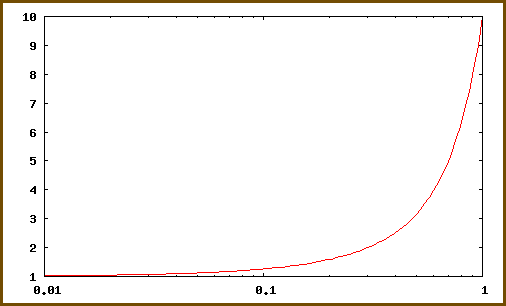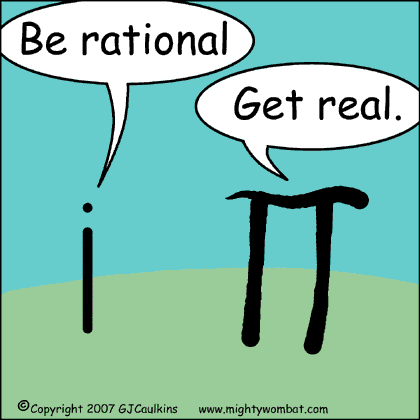Hello clase,
I will summarize the extent of our days activities on Friday the 11th.
We took a quiz.
Ok, so the quiz was on sections 1-3 of chapter 8. As for how the quiz went, i thought that i did good, and i thought that i knew the material really well, though as i recently found out, i didn't seem to do very well on it...
You will remember that on this quiz we were not allowed to use our beloved ti inspire calculators, and instead we were forced to use the old school calculators that Mr. Cope said he used in High school, which then put him in a solemn state of mind, in which perhaps he pondered for a minute, flowing through wonderful memories of his high school career. He then made it clear to us that real life was much better, and we became confused because we assumed that we were in real life. I think we all left class that day shaken...
Anyway, as for the quiz material, you could obviously read all the posts below which go into far greater detail about each section, though ill give you an overview of all three sections.
Pause: I just realized i forgot my math folder somewhere.. or i lost it. So give me a couple seconds to look up the notes on moodle, which you can get to by going to
http://gbs-moodle.glenbrook225.org/moodle/. What a great example of what you can find on moodle. You should view me as an example of a common mishap that you can learn from.
Perhaps you forgot your folder, and you have algebra homework due the next day...
WHOA
where you can find not only every notes sheet from every section so far, but also the answers to the homework from the previous night. Not only that but you can even access the online book, with a code and a link that is posted on the algebra moodle page.
So as another example, Say you did your homework, and in class you checked each one of them with the answers Mr. Cope puts on the board. When you get home you realize: i accidentally forgot to correct one of the questions on my homework.
OK, OK
You now wont be freaking out, because of this vital information i have just given you. Instead you will immediately remember the Wisdom of Téo. Go to moodle. here is the link once again:
Also the link to go to the book is http://www.ucsmpmath.com/
and the access code for the book is: 1CED23F3
So now that i found that excellent connection in which to point you to moodle for all your needs and desires, let me get back to explaining the quiz material.
8.1
-Composition of functions
if you remember, this is when we simply put one function inside of another. From previous lessons we have learned that when we see f(x) notation, whatever is in ( ) gets plugged in place of x. This same concept applies here. though instead of placing a simple value such as 5 inside the parentheses, we insert a whole other function. Sometimes, if theres variables we insert the entire other function into the ( ) though for some we simply simplify one function and insert its value into the other, which we then solve.
example:
theres no good way of showing this here but...
If we define 2 functions, g(x)=x^2 and f(x)=3/4X-10
and we want to evaluate f(g(2))
we know to solve g(2) first because it is the furthest to the right, and like Mr. Cope analogied to us the other day, its like reading Arabic.
So we would first solve g(2)
g(2)=2^2=4. We plug in 2 to the function g and we get 4.
Next we insert the 4 into the function f, because as you can see f(g(2)), we plug in the result of g(2) into f.
f(4)=3/4(4)-10=-7. We get -7 when we plug in the result of g into f. So -7 is the answer.
I hope that you can somewhat understand what im saying here.
8.2
-Inverses of Relations
there are three rules for inverses.
1) a rule for g can be found by switching x + y and solving for y
What this means is that if we have the equation y=2X+5, then we simply make the y an x, and we make the x a y, like so..
X=2Y+5
2) A graph of g is found by reflecting f over the line y=x
this may sound confusing, as i didn't exactly understand it myself at first, but no matter what, the inverse is reflected literally over the equation y=x. Simple as that
3)the domain of g is the range of f. the range of g is the domain of f
This is pretty straightforward, though ill explain it anyway. the domain of g is the range of f and the range of g is the domain of f. ok theres no other way to say it. um...
8.3
-Properties of Inverse Functions
The term thing used to reference the inverse of a function is f^-1
For points on a graph, the inverse of a point is found by switching x and y, much like in 8.2 above. So for the point (a,b), the inverse is (b,a).
We learned in this section how to determine whether or not the inverse of a function is a function, by applying the horizontal line test. Its just like the vertical line test but horizontal.

The above image, assuming it shows up, illustrates how to use the horizontal line test. We know from this graph that the inverse is not a function because each horizontal line intersects the graph at 2 places.

This image now illustrates when the horizontal line test would pass. Here, each horizontal line intersects the graph at only one point, which tells us that the inverse is a function.
Now once again, this is acting simply as a broad summary of all the sections that were on the quiz but if you would like to see the more in depth ones for each section, you can find them below this post. Also ill post the link to each:
8.1: I could not find for some reason, the 8.1 blog post on the period 2 site so ill post the link to the one that i found on the period 1 site, which should be better anyway since period 1 is so much better than us haha, just kidding.
http://advalg1011p1.blogspot.com/2011/03/chapter-81.html
If you made it this far to read this, thank you and i hope that i was able to somewhat give you an overview of our day and our quiz on Friday.






